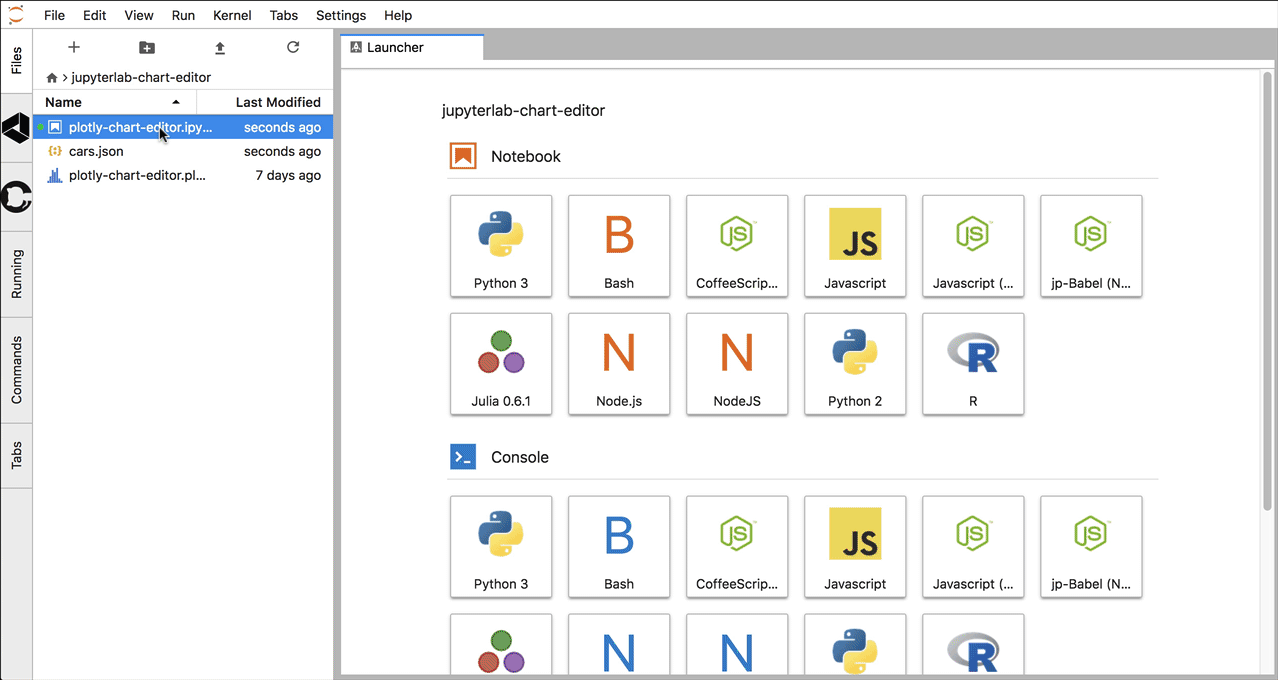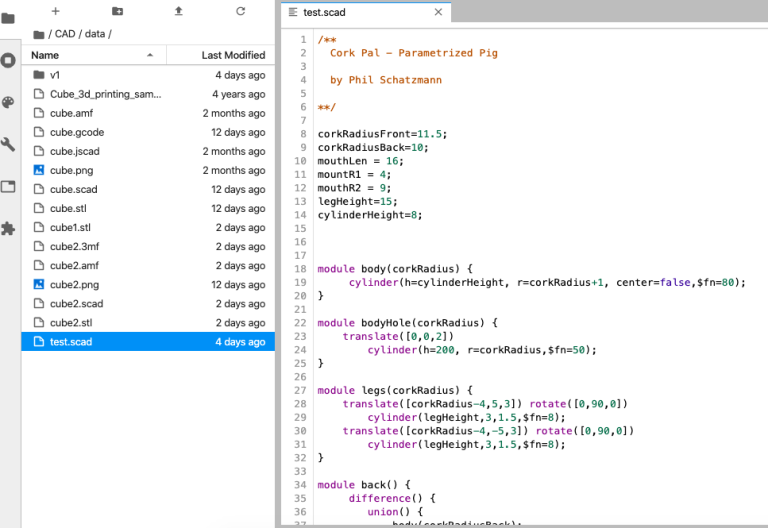
- #Jupyterlab extension how to
- #Jupyterlab extension install
- #Jupyterlab extension code
- #Jupyterlab extension series
These Notebook servers run as containers inside a Kubernetes Pod. Kubeflow Notebooks provide a way to run web-based development environments inside a Kubernetes cluster. In this post we’ll focus on getting a little more familiar with Jupyter notebooks and how we can leverage them within Kubeflow as part of our machine learning workflow.
#Jupyterlab extension series
The aim of the series is to walk you through a detailed introduction of Kubeflow, a deep-dive into the various components, add-ons and how they all come together to deliver a complete MLOps platform.

This definition just under the imports at the top of the file.Welcome to the sixth blog post in our “Kubeflow Fundamentals” series specifically designed for folks brand new to the Kubelfow project.
#Jupyterlab extension code
Now define the APODResponse type that was introduced in the code above. Image source and title attributes based on the response. The next lines define a function get a random date in the form YYYY-MM-DD format, and then the function is used to make a request using the HTMLĪPI that returns information about the Astronomy Picture of the Day for that date. The first two lines create a new HTML element and add it to */ const extension : JupyterFrontEndPlugin = ** * Initialization data for the jupyterlab_apod extension. To the command palette interface and the JupyterFrontEnd instance. Change the import at the top of the file to get a reference Random Astronomy Picture command to the palette and get it to show an Astronomy Pictureįire up your favorite text editor and open the src/index.ts file in yourĮxtension project. For your first addition, you’re going to add a The command palette is the primary view of all commands available to Add an Astronomy Picture of the Day widget ¶ Show an empty panel ¶ JupyterLab to see the effects of changes below. Note: Leave the terminal running the jupyter lab command open and running If not, go back make sure you didn’t miss a step, and reach If you do, congratulations, you’re ready to start modifying the extension! JupyterLab extension jupyterlab_apod is activated! in the console. In that browser window, open the JavaScript consoleīy following the instructions for your browser:Īfter you reload the page with the console open, you should see a message that says

#Jupyterlab extension install
It’s a best practice to leave the root conda environment (i.e., the environment createdīy the miniconda installer) untouched and install your project-specificĭependencies in a named conda environment. Take snapshots of your work as you progress through this tutorial Git, a version control system you’ll use to NodeJS, the JavaScript runtime you’ll use toĬompile the web assets (e.g., TypeScript, CSS) for your extension

You’ll use to bootstrap your extension project structure (this is a Python tool Next create a conda environment that includes: Here we go! Set up a development environment ¶ Install conda using miniconda ¶Ĭonda’s installation documentation. The completed extension, showing the Astronomy Picture of the Day for.
#Jupyterlab extension how to
How to release your extension for others to enjoy How to version control your work with git How to iteratively code, build, and load your extension in JupyterLab (You’ll need to modify the commands slightly if you are on Windows.) How to set up an extension development environment from scratch on a

Shows the image and metadata in a tab panelīy working through this tutorial, you’ll learn: This pageĭescribes how to create one type of extension, an application plugin,Īdds a “Random Astronomy Picture” command to theįetches the image and metadata when activated JupyterLab extensions add features to the user experience.


 0 kommentar(er)
0 kommentar(er)
